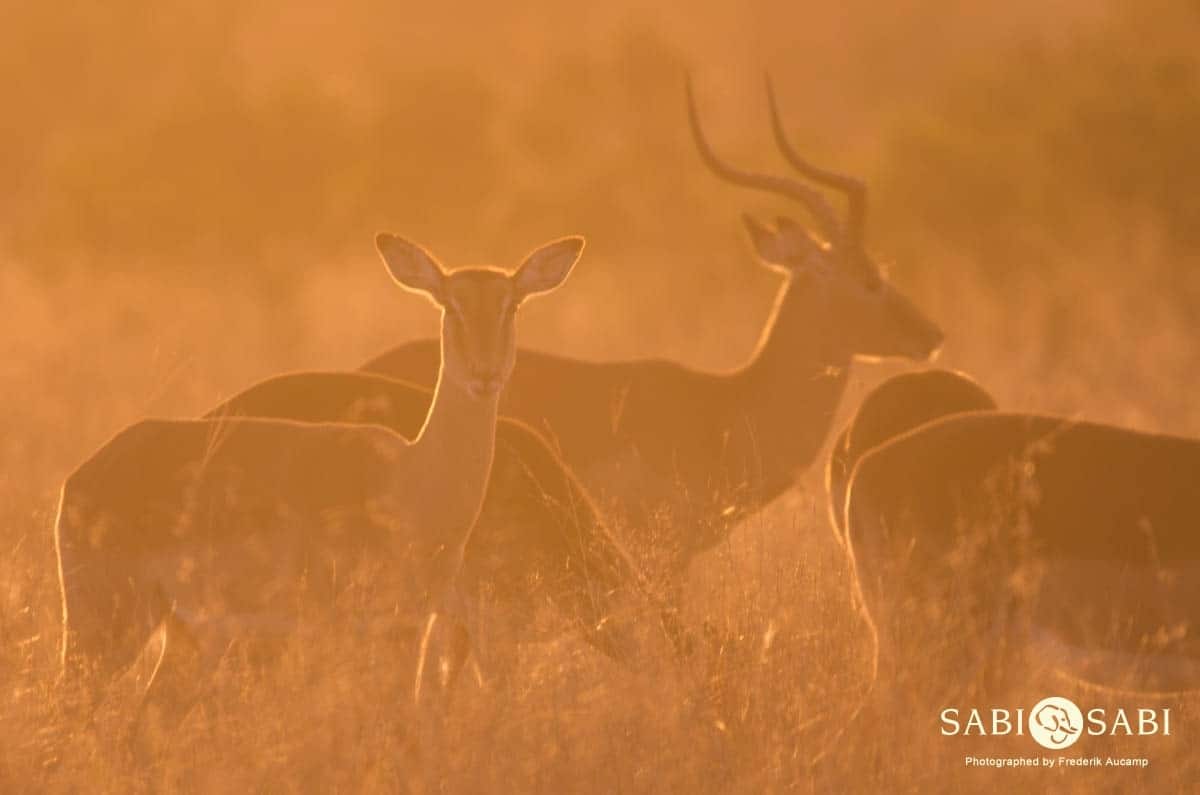Impalas
on Oct 08, 2018When embarking on your first safari experience, one of the first animals you will encounter is the impala. They are beautiful animals that belong to the antelope family and when you get to see them for the first time, you will be filled with joy and excitement trying to take as much photos as you can, to capture that memory forever.
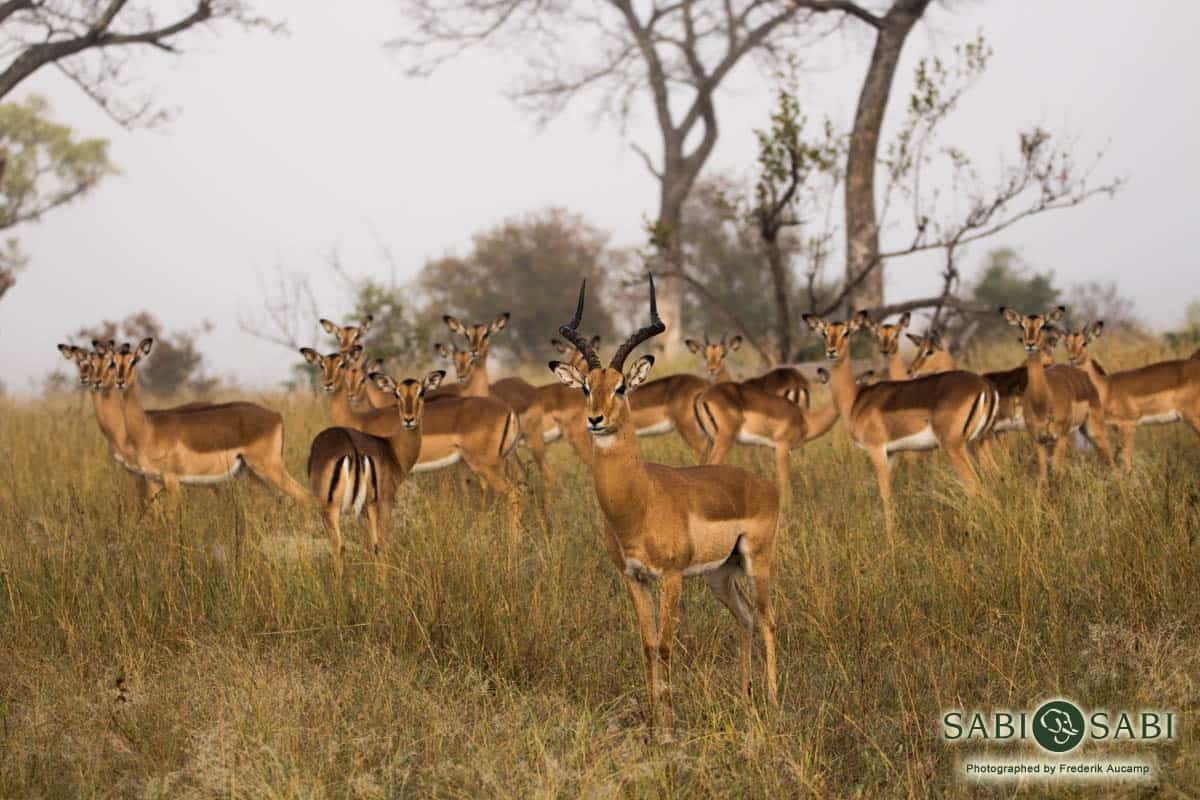
As you carry on with your safari experience you will get to see a lot more impalas, more than what you would have imagined, and this could make you lose interest in them. But if you only knew how interesting and successful they are, it will be very difficult to lose interest in them. They might be one of the most overlooked animals in the African bush, but those that overlook them don’t know what they are missing. Let us all learn more about impalas...
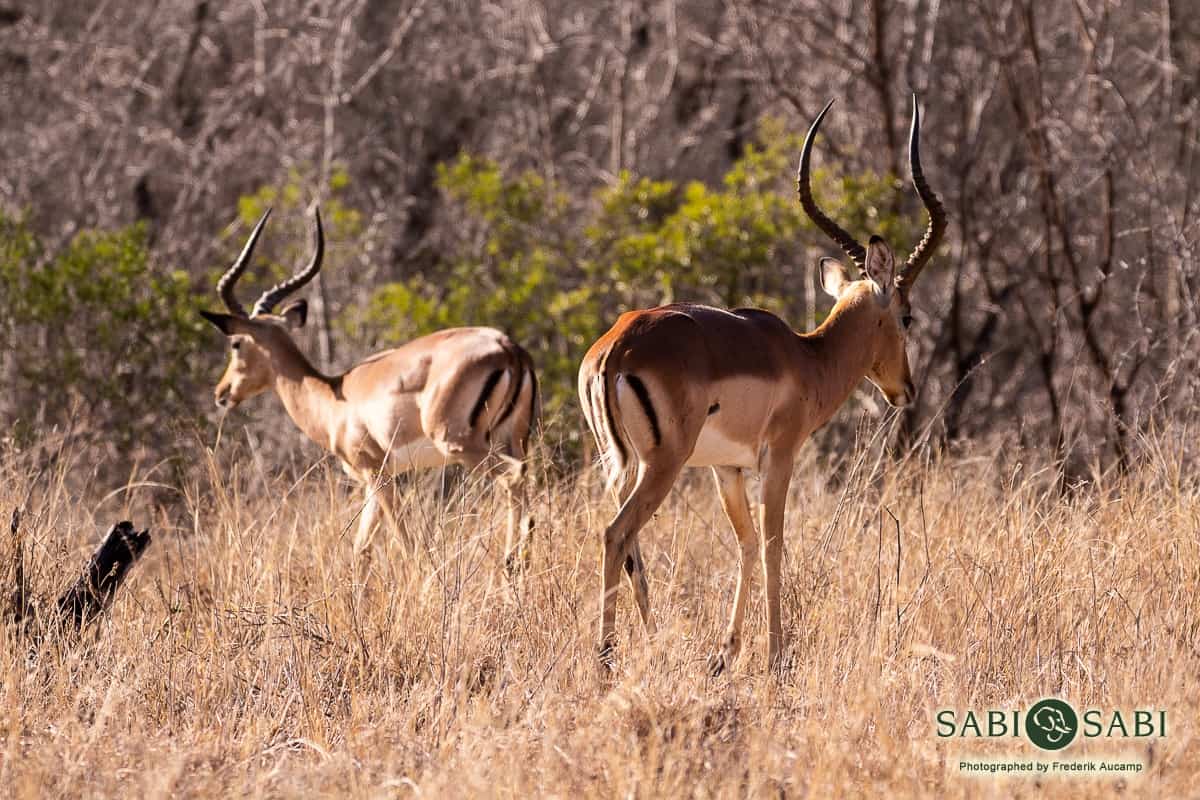
The reason there are so many impalas might be because they have a very successful breeding behaviour. The peak of the mating season is around April – May. During this period, they will divide themselves into two separate herds. The first herd will be a harem herd which consists of one dominant ram and a lot of ewes. This herd will slowly be followed by the second herd known as a bachelor herd consisting of only males. The dominant male will be so busy herding his females together; mating with them; and chasing intruding bachelor males away, that he doesn’t always groom himself properly or feed properly, which will cause him to lose condition and become weaker. By this time a stronger male from the bachelor herd will chase the weaker male away and take over as the new dominant male. This cycle will continue until all the females in the herd are impregnated, which will ensure new genes to cycle into the herd on a regular basis, reducing the risk of interbreeding.
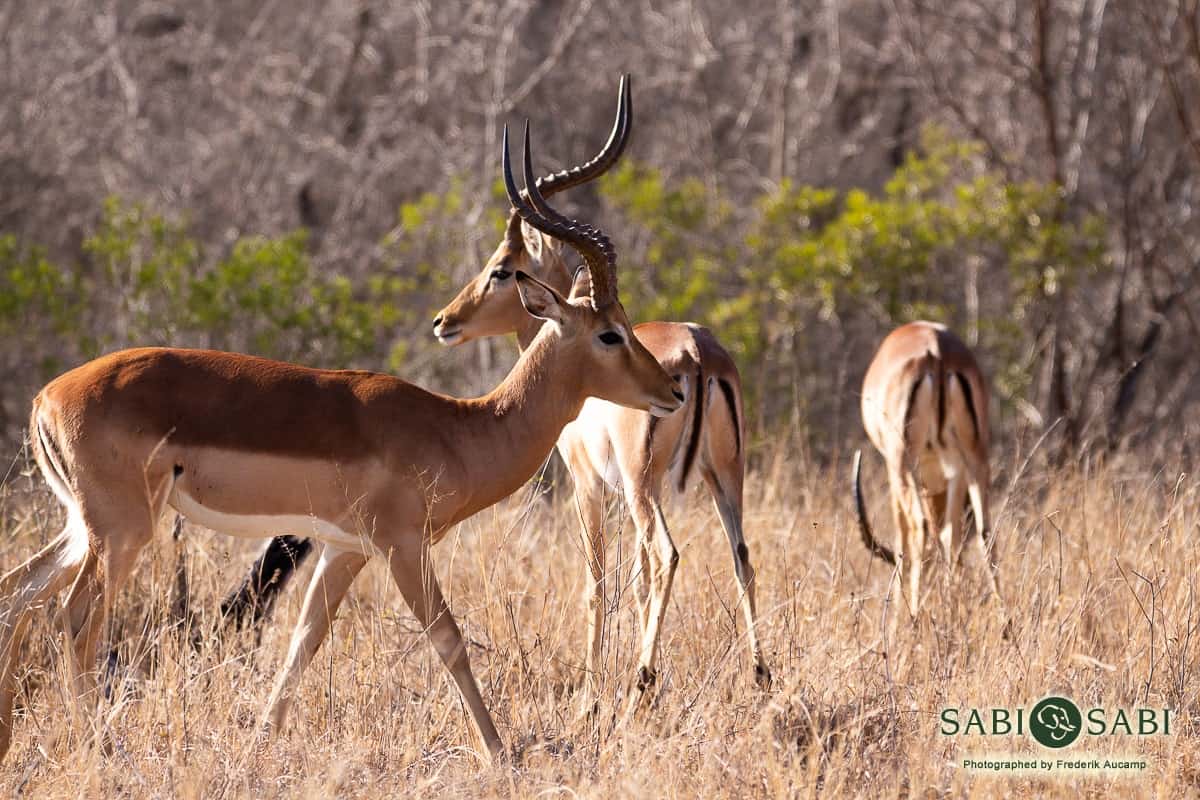
Impalas have a six-month gestation period and will give birth around November – December. By all giving birth in a short period of time, they flood the market, predators will be able to kill a lot of young lambs but will never be able to kill all of them. It is believed that the females can prolong their pregnancy period while waiting for the first rains to water the vegetation. This is important as more lush green vegetation will help the females produce enough milk for their lambs and the lambs will have a sufficient food source when they start feeding on vegetation.
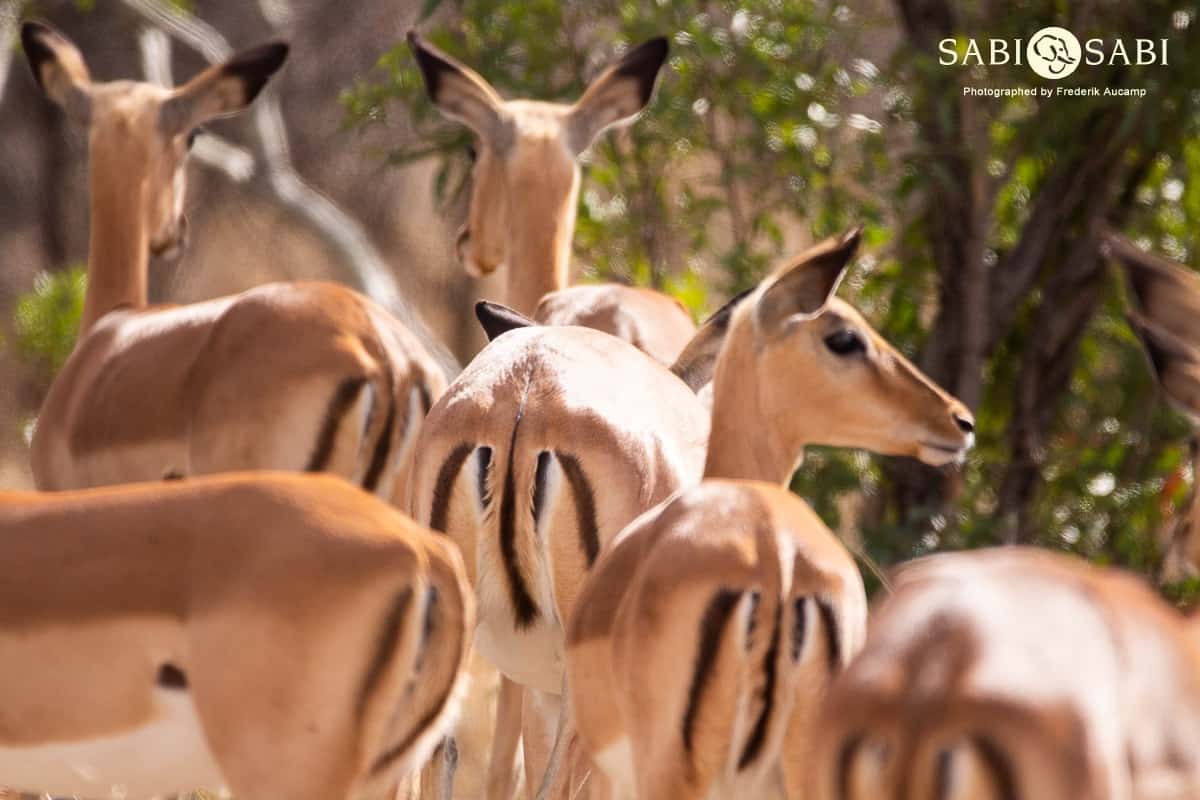
Impalas roam in grassland and woodland areas and are mixed feeders, meaning they browse and they graze. They are not restricted to just leaves or grass but can eat plenty of both. This is vital in a drought situation.
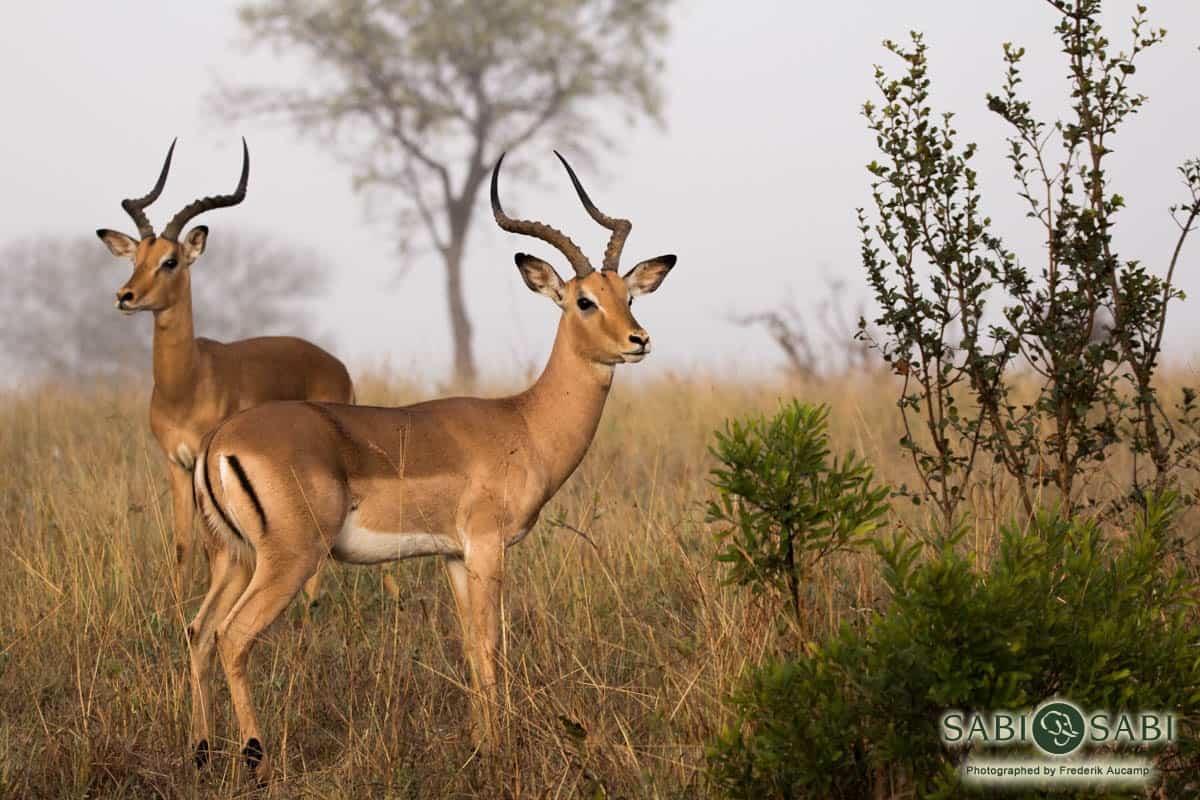
Living in big herds is very advantageous for them as the more eyes, ears, and noses there are, the easier it will be for them to pick up on predators. It only takes one individual in the herd to spot a predator and sound the alarm, and before you know it the whole herd is aware of the predator. In some cases, the whole herd will mob the predator by alarm calling and moving together as one towards the predator. This could cause the predator to lose confidence and move away.
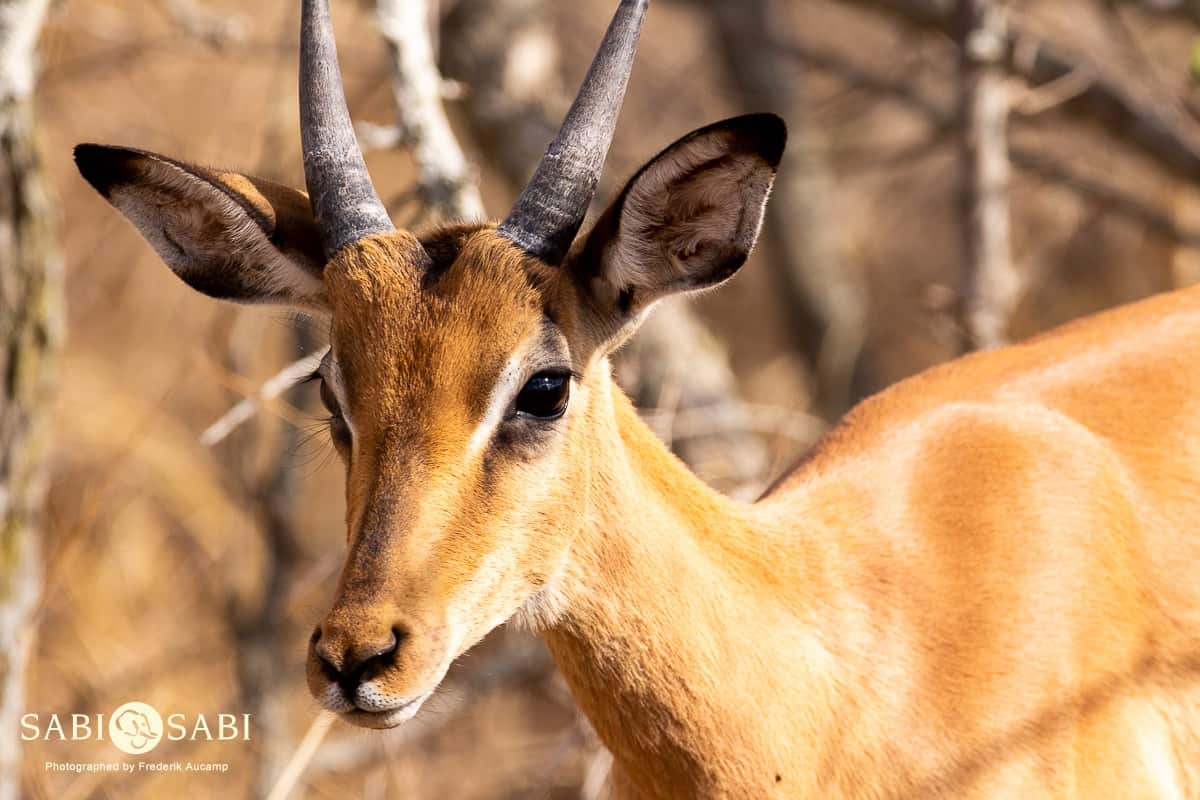
I have only mentioned a few facts about impalas and already they sound more interesting! Come join us on a Sabi Sabi safari and you will be amazed at how much more you can learn about impalas...
